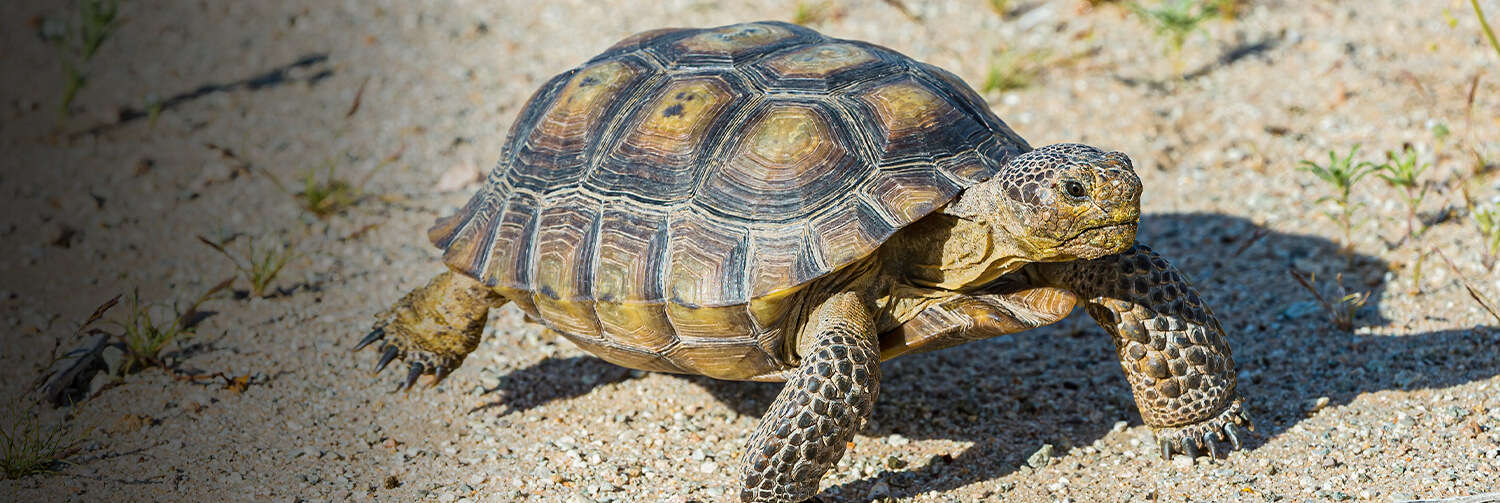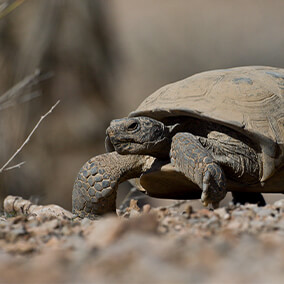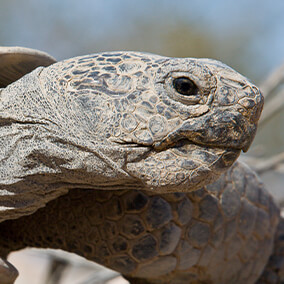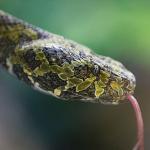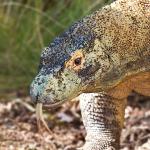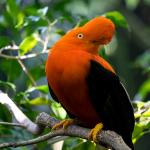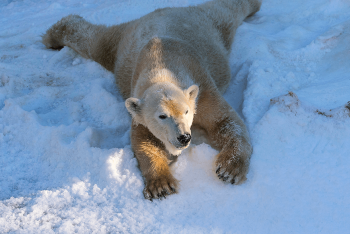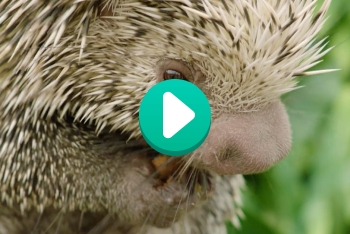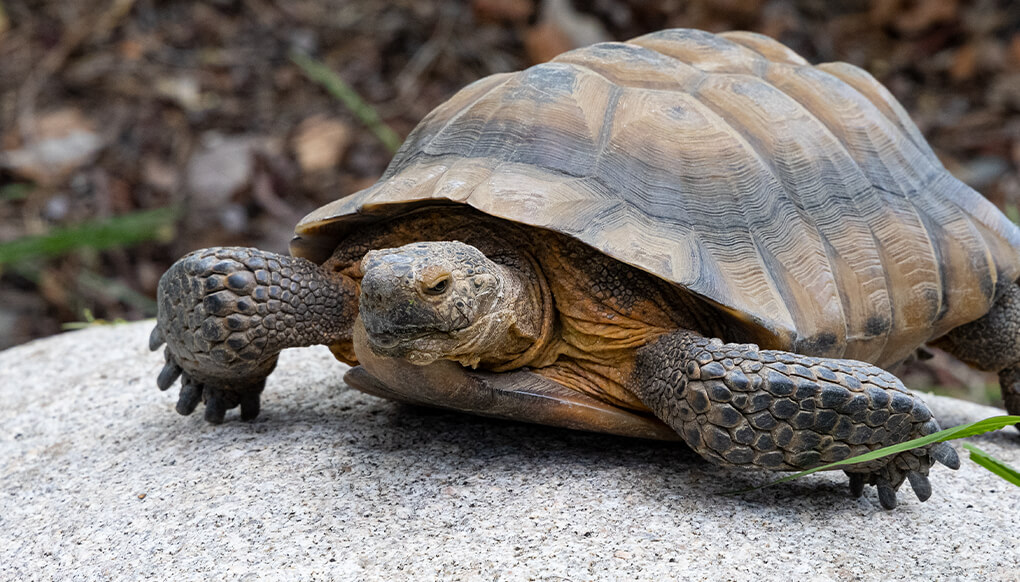
Desert tortoise

Reptiles


Threatened
facts

Desert tortoises eat grasses, flowers, fruit, and cacti.

description
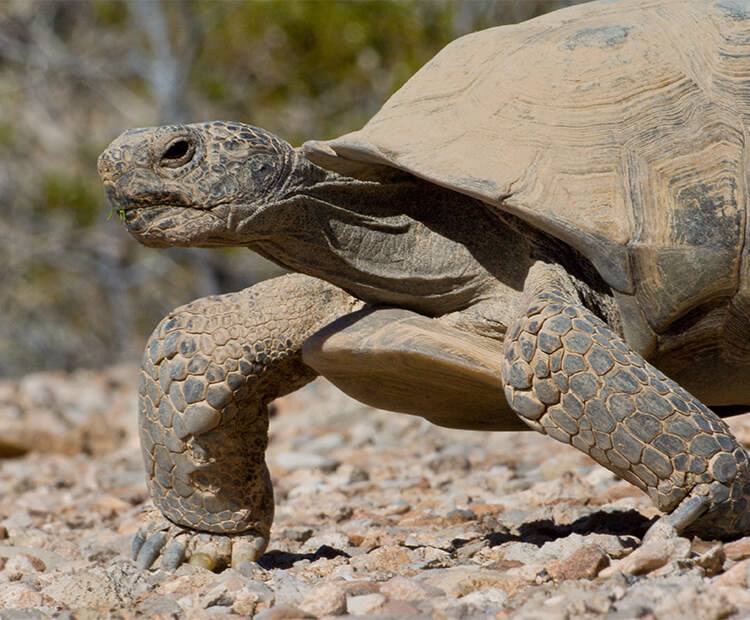
Ancient adaptations
Desert tortoises have not changed much over the past 200 million years. Like other tortoises, they depend on a domed shell for protection. While they are slow to grow to their adult size and live a long time (50 to 100 years in the expert care of wildlife specialists), desert tortoises are surprisingly quick on their feet!
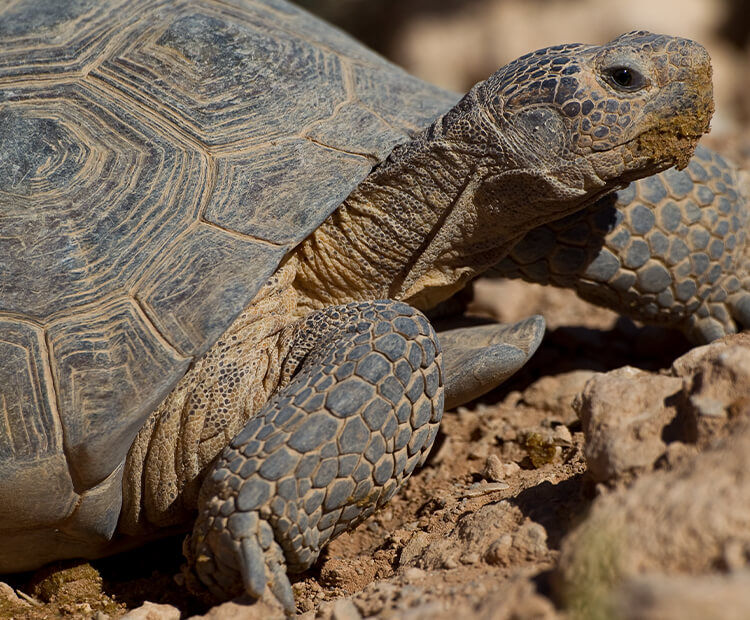
Dig it
A desert tortoise’s front legs are built like shovels, with long, sturdy nails that are good for digging. They create burrows or dens in the dirt to hide from predators and cool off from the hot sun. Desert tortoises spend about 95 percent of their life in a burrow. Other animals—like kangaroo rats, burrowing owls, and gopher snakes—also use tortoise dens for shelter.
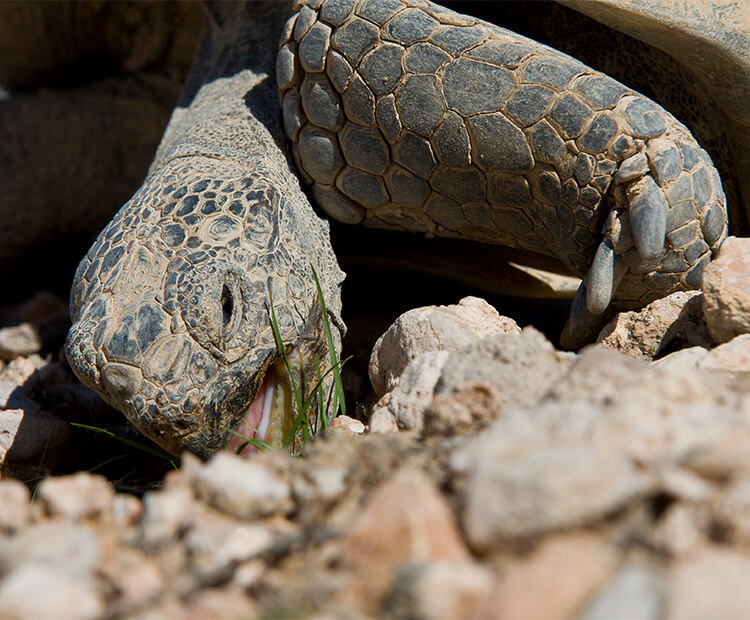
Desert designers
Desert tortoises are a keystone species. This means that they play an important role in their hot and dry ecosystem. When they eat cacti, flowers, and other plants, the seeds from their meals spread across the desert as they poop. This helps native plants and grasses grow, providing more food and shelter for other animals.
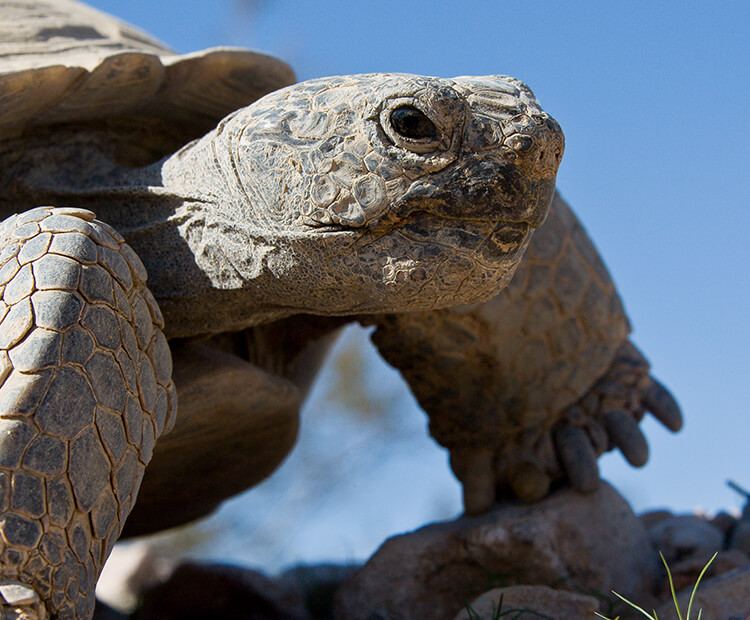
A little help
Desert tortoises are a vital part of the southwestern ecosystem, but they need our help. These amazing reptiles are threatened by habitat loss and disease. To study and protect desert tortoises, San Diego Zoo Wildlife Alliance scientists use technology to track and monitor their locations and body condition over time—critical knowledge that will help guide our conservation efforts.

